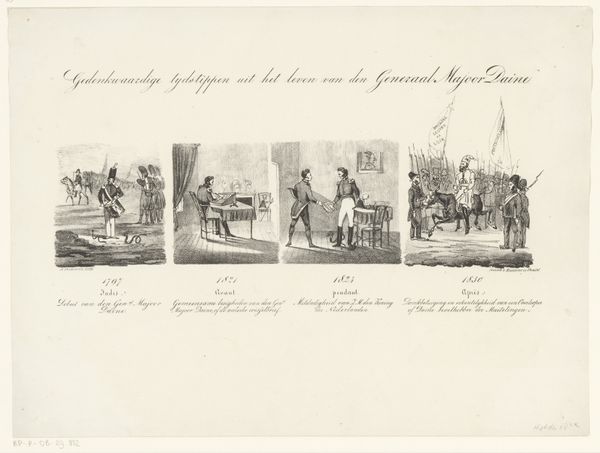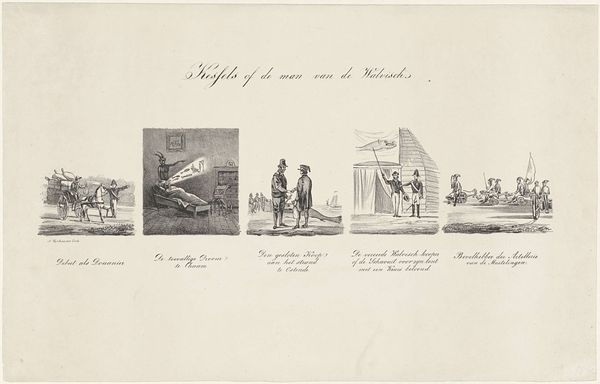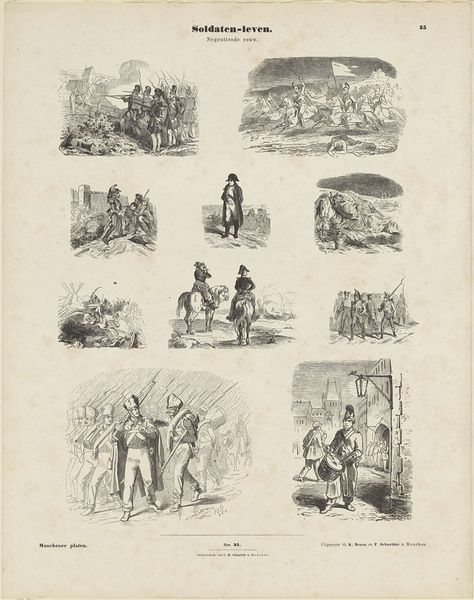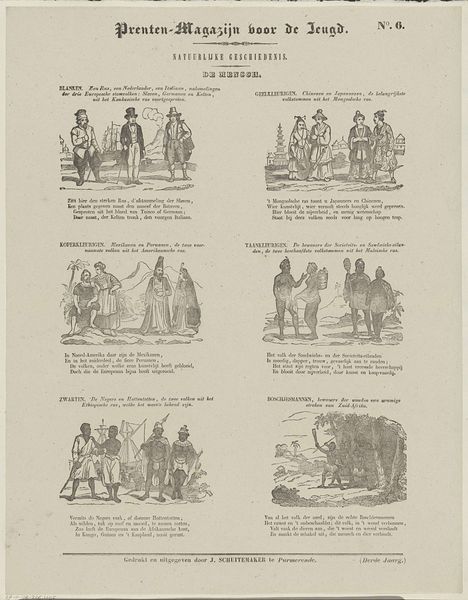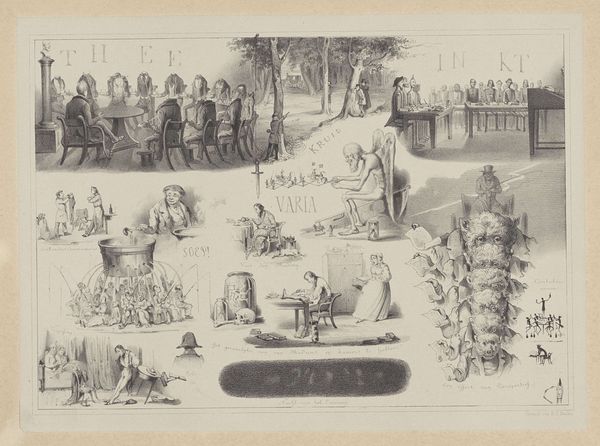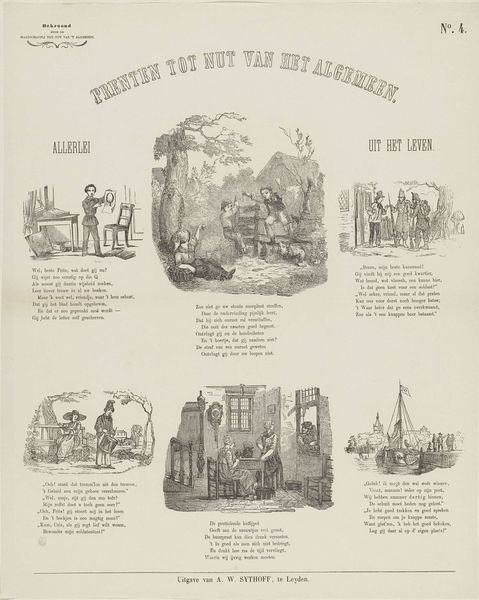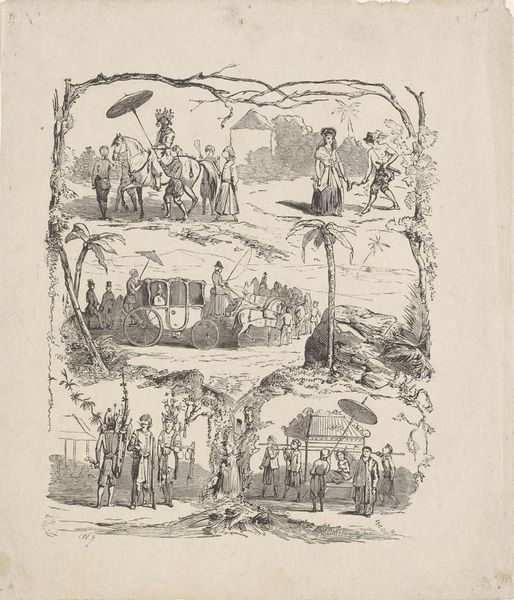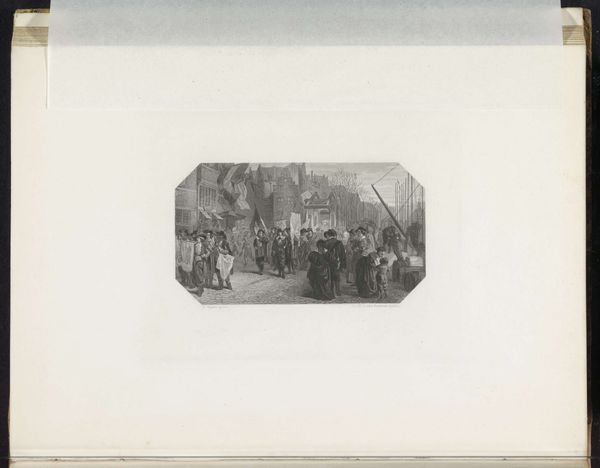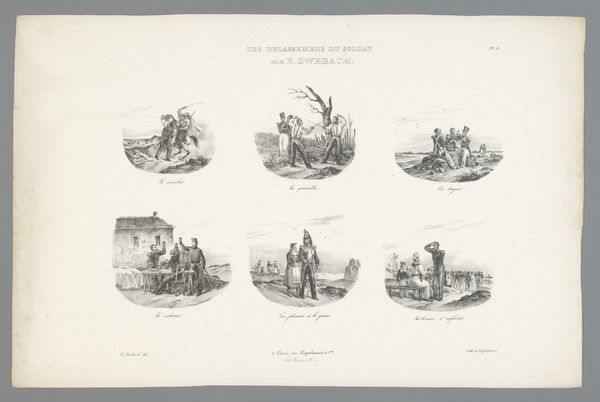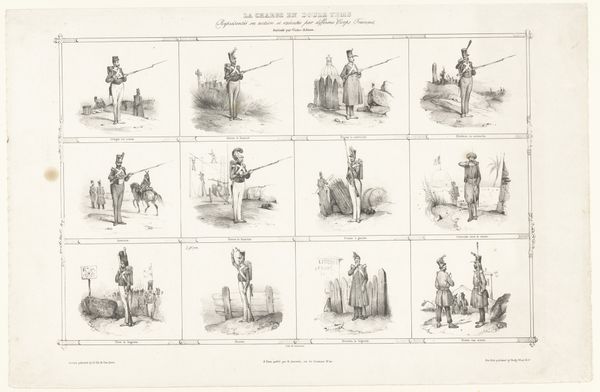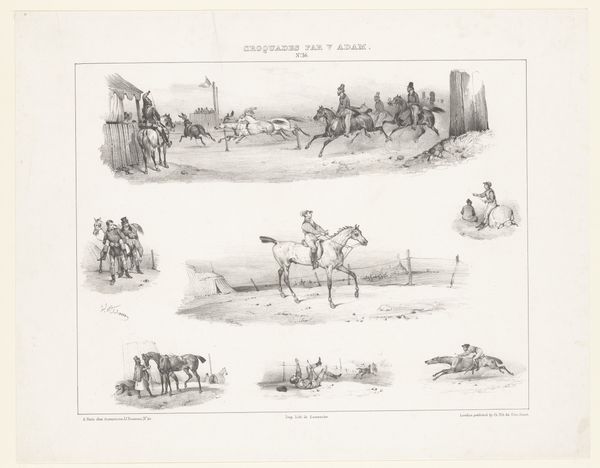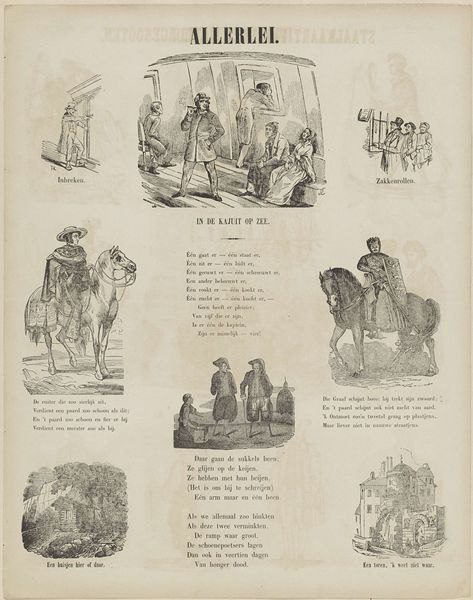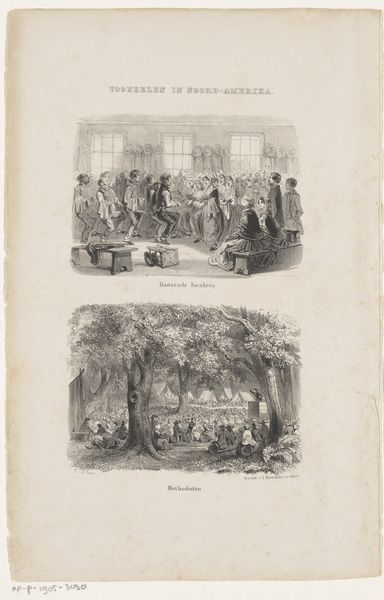
drawing, print, engraving
#
portrait
#
drawing
#
narrative-art
# print
#
figuration
#
romanticism
#
line
#
history-painting
#
engraving
Dimensions: height 260 mm, width 348 mm
Copyright: Rijks Museum: Open Domain
Curator: Let’s explore this fascinating engraving, simply titled "Spotprent op generaal Daine, 1830." It comes to us from the Rijksmuseum collection. The artist remains anonymous, but the print's message speaks volumes. Editor: Immediately, I sense a tone of satire or mockery. The figures seem almost cartoonish, the lines are stark, and the composition feels unbalanced. Curator: Yes, the piece divides itself into distinct narrative panels representing stages in the general's life. The earliest depicts him in full uniform, the second seated, perhaps at his desk. Editor: Observe the fourth and final panel. Daine, looking rather ridiculous, sits backward on a donkey, led by figures waving what appear to be white flags of surrender. It evokes a humiliating procession. The contrast between his supposed authority and current degradation is palpable. This imagery deeply evokes failure. Curator: Indeed. The print uses a strong, graphic style. The artist uses linear elements to advance the narrative quality. Look closely at the lines describing texture in clothing or the suggestion of architectural detail. The limited tonal range lends itself to stark contrast—a visual articulation of the fraught political landscape. Editor: I agree, that contrast contributes greatly. It appears as a rather scathing commentary on power, specifically on Daine’s capitulation. Symbols such as the white flags carry considerable weight within the cultural context. The engraving seems to memorialize humiliation as much as history. The title indicates we may read it as political propaganda. Curator: Considering the socio-political turmoil of the period, particularly tensions between the Netherlands and Belgium, one may view this work as more than just a portrait, and examine it instead as an instance of charged historical narrative. Editor: Looking at it through that lens, the donkey transforms. The donkey symbolizes folly and stubbornness. The surrender flags now signify betrayal and national shame. Curator: By analyzing the artistic elements—line, form, composition—we gain an understanding of both content and a greater cultural context. Editor: And for me, reading the cultural symbolism embedded within a scene gives profound insight to its emotional landscape. It serves to unearth truths lying beyond mere representation.
Comments
No comments
Be the first to comment and join the conversation on the ultimate creative platform.
